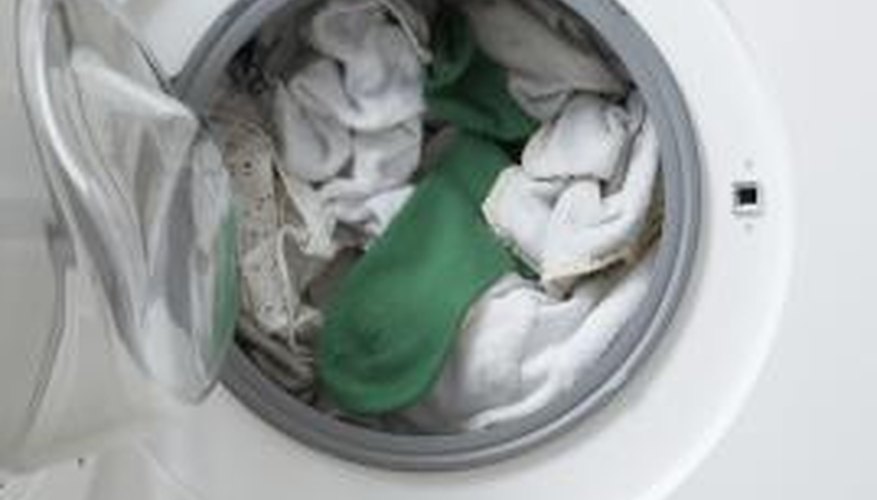A washing machine is a valuable time and labour saving device, but when the water drains more slowly, or even not at all, it can cause consternation as the owner tries to correct the problem. The blockage can come from one of three areas, a clogged filter in the machine itself, a blocked hose from the machine to the wall outlet pipe, or a blocked wall outlet pipe. The simplest, and first to be checked, is the drain hose.
- A washing machine is a valuable time and labour saving device, but when the water drains more slowly, or even not at all, it can cause consternation as the owner tries to correct the problem.
Check the hose to see if it has become kinked along a bend. Sometimes, moving the washer to give the hose more room will open the passageway.
Remove the hose from the machine and unhook it from the wall. The hose may be connected to the lower part of the back of the washer by a C-clamp, a spring-clamp or a ring-clamp. Visually check the interior of the ends for blockages, and then drain water from one end to the other. If the water pours freely through the hose, the problem is somewhere else. If the water is blocked, the hose needs to be flushed out. A garden water hose with a high-pressure nozzle is effective by sticking it one end and letting the water drain from the other.
Locate the filter by looking in your manual. It may be in the front under the kick panels, in the back near the hose outlet or under the spindle. Unplug the machine before you access the filter. Take it out of the washer as directed by your instructions and clean it with soap and water, rinse and let dry. Remove any debris around the screen and in any hoses leading to or away from it. A baby-bottle brush is good for cleaning the small hoses. Put the filter back into place.
- Locate the filter by looking in your manual.
- Take it out of the washer as directed by your instructions and clean it with soap and water, rinse and let dry.
Flush the wall outlet pipe with a blow bag and a garden water hose. A blow bag is a balloon-like bladder made of heavy-duty rubber. Measure the diameter of the opening to the drain pipe and purchase a blow bag sized to fit the drain. Attach the correct end of the bag to the garden hose and then push the bag into the drain as far as it will easily go. Turn the water to the hose on and let it fill the bag. The bag will force the water down the pipe with sufficient pressure to clear out any clogs. Let run for 10 minutes to ensure the pipe is completely cleaned. Have people stationed by the toilets and sinks to ensure that no water inadvertently comes up from them because of cross-pipe construction.
- Flush the wall outlet pipe with a blow bag and a garden water hose.
- The bag will force the water down the pipe with sufficient pressure to clear out any clogs.
TIP
Many older homes have weakened pipes. Use a blow bag cautiously to avoid creating a bigger problem.
